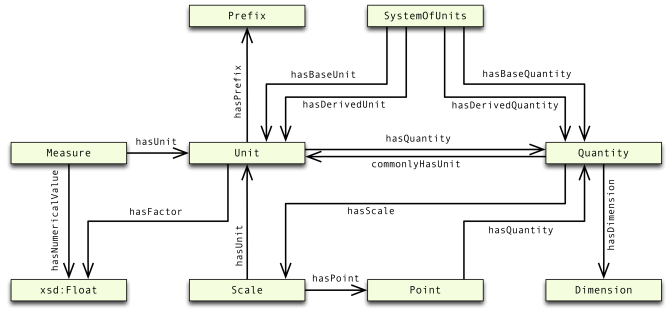
Service
Ontology of units of Measure (OM)
Apps with personalised dietary advice, systems that predict the shelf life of fresh fruit and vegetables, and a detection system that indicates how many underwater species are left in the ocean all have one thing in common: they only work if computers know how to handle the underlying data. One way to do this is by annotating with the ontology of measurements (OM), which contains thousands of terms on quantities and units pertaining to things like length, weight and energy value – from metres and inches to spoons and millilitres per litre.
- Unfortunately, your cookie settings do not allow videos to be displayed. - check your settings
Widely applicable
Using an ontology of units of measure (e.g., OM) is one of the crucial first steps in unambiguously exchanging and processing quantitative information. This step makes data usable for software applications.
Wageningen University and Research’s OM is used in smart software which can, for instance, adapt recipes to someone’s personal requirements, or translate them from English into Dutch – including e.g. converting ounces and other terms from English cuisine to grams. The ontology, which is available as open source software, is essential in making calculations and predictions based on data, which often originates in a combination of sources.
An independent German survey found that the Ontology of units of Measure by Wageningen Food & Biobased Research is the best performer worldwide. The evaluators concluded that OM offers most application possibilities of all the existing variants. They evaluated seven ontologies for quantities and units on the basis of criteria such as consistency, completeness and ease of use. The results were then combined with facilities to convert software units, or to compare the results from different scientific experiments. See paper.
Combining ontologies
OM overview
The OM ontology provides classes, instances, and properties that represent the different concepts used for defining and using measures and units. It includes, for instance, common units such as the SI units meter and kilogram, but also units from other systems of units such as the mile or nautical mile. For many application areas it includes more specific units and quantities, such as the unit of the Hubble constant: km/s/Mpc, or the quantity vase life. OM defines the complete set of concepts in the domain as distinguished in the textual standards. As a result the ontology can answer a wider range of competency questions than the existing approaches do. OM is modelled in OWL 2 – Web Ontology Language.
Since OM is an extensive ontology with many classes, the entire content of OM cannot be visualised in a figure. One can find all measures and units at www.ontology-of-units-of-measure.org. An overview of the class structure of OM can be found in Figure 1.

More information can be found on the GitHub page (See ‘OM GitHub’).
Application areas
- Geometry
- Mechanics
- Thermodynamics
- Electromagnetism
- Fluid mechanics
- Chemical physics
- Photometry
- Radiometry and Radiobiology
- Nuclear physics
- Astronomy and Astrophysics
- Cosmology
- Earth science
- Meteorology
- Material science
- Microbiology
- Economics
- Information technology
- Typography
- Shipping
- Food engineering
- Post-harvest technology
- Dynamics of texture and taste
- Packaging
Contact
You can always contact Wageningen Food & Biobased Research for implementing or extending OM in favour of new applications. The Food Informatics expertise group can join or assist in projects that want to use OM or need help in implementing ontologies